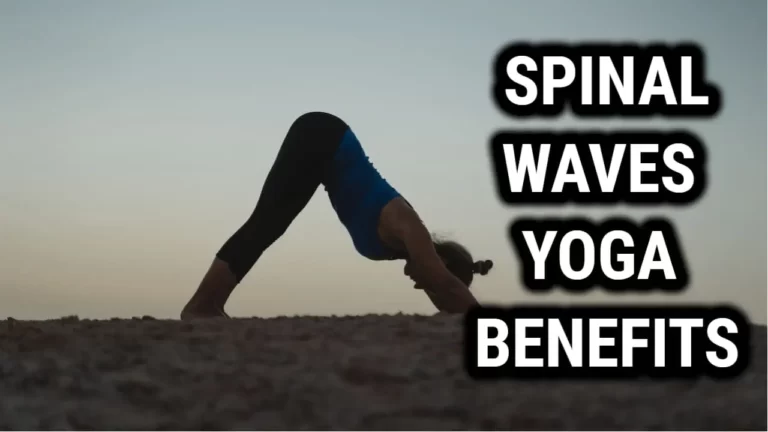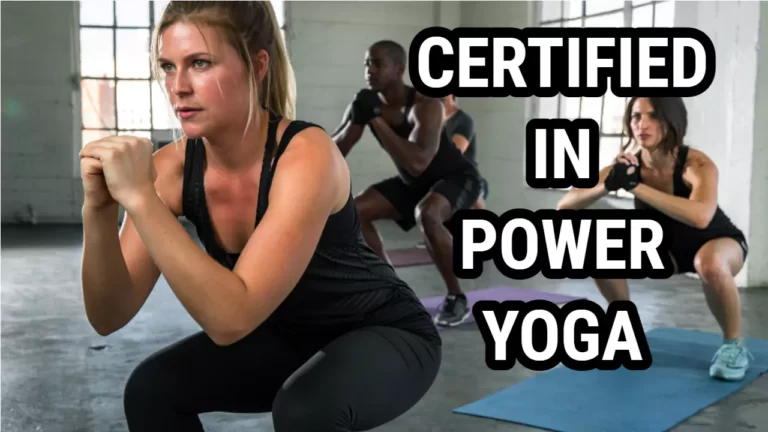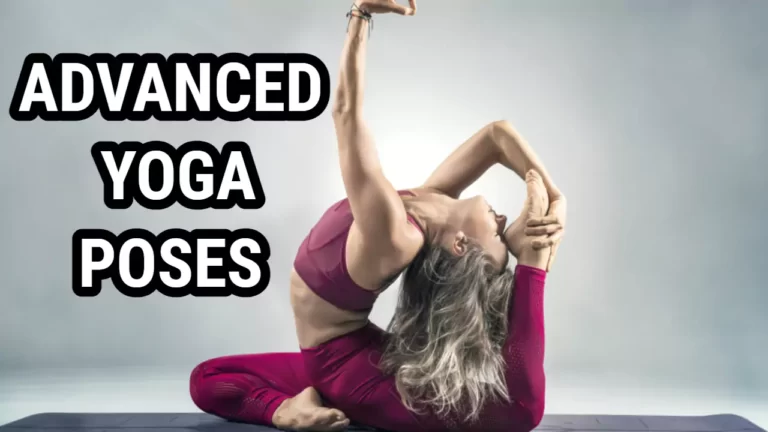Is Yoga Good For A Person Whose Weight Is Only 35 Kg?

Yoga is a popular form of exercise that has been practiced for thousands of years. It is known for its ability to improve flexibility, strength, and balance while also reducing stress and promoting relaxation. However, many people wonder if yoga is suitable for individuals who are underweight or have a low body weight, such as those who weigh only 35 kg.
According to experts, yoga is a safe and effective form of exercise for individuals of all body weights, including those who are underweight. In fact, yoga can help underweight individuals gain muscle mass and improve their overall health and well-being. Additionally, yoga can be modified to suit the needs and abilities of each individual, making it a versatile and adaptable form of exercise.
While yoga alone may not be enough to significantly increase body weight, it can be a valuable addition to a well-rounded exercise and nutrition plan. By incorporating yoga into a healthy lifestyle, individuals who are underweight can improve their physical fitness, mental health, and overall quality of life.
Understanding Yoga and its Benefits
Yoga is a form of exercise that originated in ancient India and has been practiced for thousands of years. It involves a combination of physical postures, breathing techniques, and meditation to promote overall health and well-being. Yoga is a low-impact exercise that can be practiced by people of all ages and fitness levels.
One of the main benefits of yoga is its ability to reduce stress and promote relaxation. Yoga has been shown to lower levels of the stress hormone cortisol, which can have a positive impact on overall health. In addition, practicing yoga can improve mood, reduce anxiety and depression, and improve sleep quality.
Yoga can also have physical benefits, including improving flexibility, strength, and balance. Many of the postures in yoga require the use of multiple muscle groups, which can help to tone and strengthen the body. Regular practice of yoga can also improve cardiovascular health and lower blood pressure.
For individuals who are looking to lose weight or maintain a healthy weight, yoga can be a helpful tool. While yoga may not burn as many calories as more intense forms of exercise, such as running or weightlifting, it can still be an effective way to manage weight. Yoga can help to increase mindfulness and awareness of the body, which can lead to more mindful eating habits and better overall nutrition.
Yoga Poses for People with Low Body Weight
Yoga is a great way to stay healthy and fit, even for those with low body weight. Here are some yoga poses that are particularly beneficial for people with low body weight:
- Mountain Pose: This pose is great for improving posture and increasing strength in the legs and core. Stand with your feet hip-width apart, arms at your sides, and your weight evenly distributed between both feet. Inhale as you raise your arms overhead, reaching towards the sky. Hold for a few breaths, then exhale as you lower your arms back to your sides.
- Warrior I: This pose is great for building strength in the legs and core, and for improving balance. Begin in Mountain Pose, then step your left foot back about three to four feet. Turn your left foot out at a 45-degree angle, and bend your right knee so that it is directly over your ankle. Reach your arms up towards the sky, and hold for a few breaths before switching sides.
- Bridge Pose: This pose is great for strengthening the glutes, hamstrings, and lower back. Lie on your back with your knees bent and your feet flat on the floor. Place your arms at your sides, palms facing down. Inhale as you lift your hips towards the sky, pressing your feet and arms into the floor. Hold for a few breaths, then exhale as you lower your hips back down to the floor.
- Tree Pose: This pose is great for improving balance and strengthening the legs. Begin in Mountain Pose, then shift your weight onto your left foot. Bring your right foot up to rest on your left thigh, with your toes pointing towards the floor. Bring your hands together in front of your heart, and hold for a few breaths before switching sides.
- Child’s Pose: This pose is great for stretching the back, hips, and thighs. Begin on your hands and knees, with your wrists directly under your shoulders and your knees directly under your hips. Lower your hips back towards your heels, and stretch your arms out in front of you. Rest your forehead on the floor, and hold for a few breaths.
Remember to listen to your body and only do what feels comfortable for you. If you have any concerns about your ability to do yoga poses, speak with a qualified yoga instructor or healthcare provider.
Also Read: Does Surya Namaskar Help You Gain Weight?
Precautions to Take While Practicing Yoga
Yoga is generally considered safe for people of all ages and body types, including those who weigh only 35 kg. However, there are some precautions that you should take to ensure a safe and effective practice:
- Consult with your doctor before starting any new exercise program, especially if you have any health conditions or concerns.
- Choose a qualified and experienced yoga instructor who can guide you through the practice safely and effectively.
- Listen to your body and avoid pushing yourself beyond your limits. Start with gentle yoga poses and gradually work your way up to more advanced poses as your body becomes stronger and more flexible.
- Use props, such as blocks and straps, to modify poses and make them more accessible to your body.
- Avoid practicing yoga on a full stomach, as this can cause discomfort and interfere with your practice.
- Stay hydrated by drinking plenty of water before, during, and after your yoga practice.
- Wear comfortable, breathable clothing that allows you to move freely and doesn’t restrict your range of motion.
- If you experience any pain or discomfort during your practice, stop immediately and seek guidance from your instructor or healthcare provider.
By taking these precautions, you can enjoy the many benefits of yoga while minimizing the risk of injury or other complications.
Yoga and Diet for People with Low Body Weight
Yoga is a great way to improve overall health and well-being, but it is important to take into account your individual needs and goals, especially if you have a low body weight. Yoga can be a helpful tool in maintaining or gaining weight, but it should be combined with a healthy diet and lifestyle.
When practicing yoga, it is important to focus on poses that build strength and muscle, such as Warrior II, Chair Pose, and Plank. These poses can help increase muscle mass and improve overall body composition. Additionally, practicing yoga can help reduce stress and anxiety, which can be beneficial for those with low body weight who may be experiencing mental health challenges related to their weight.
In addition to practicing yoga, it is important to maintain a balanced and nutritious diet. Incorporating foods that are high in protein and healthy fats, such as nuts, seeds, and avocados, can help support healthy weight gain. Eating frequent, small meals throughout the day can also help increase calorie intake and support weight gain.
It is important to consult with a healthcare professional or registered dietitian to develop a personalized diet and exercise plan that meets your individual needs and goals. They can provide guidance on how to safely and effectively incorporate yoga and a healthy diet into your routine.
Related Read: What Poses Of Yoga Help In Gaining Muscle?
Conclusion
Yoga is a great way to improve overall health and wellness, regardless of a person’s weight. While there is no definitive answer to whether yoga is good for a person whose weight is only 35 kg, the available research suggests that yoga can be beneficial for people of all sizes and shapes.
Practicing yoga can help improve flexibility, strength, balance, and mental focus. It can also help reduce stress, anxiety, and depression, which are common issues faced by people of all weights.
Additionally, research has shown that yoga can help with weight management by reducing body weight, BMI, and percentage of body fat, while increasing the percentage of body muscle. However, it is important to keep in mind that yoga should be combined with a healthy diet and other forms of exercise for optimal weight management.
Overall, if you are a person whose weight is only 35 kg and interested in practicing yoga, it is important to consult with a qualified yoga instructor to ensure that you are practicing safely and effectively. With proper guidance and practice, yoga can be a great way to improve your physical and mental health, regardless of your weight.






